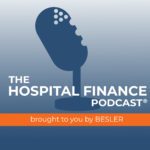In this episode, Andrew Kinnaman, Reimbursement Manager at BESLER, provides us with a glimpse into BESLER’s next free webinar, How Can BESLER OMNIA Help You – Beyond the Cost Report, hosted live on Wednesday, October 22, at 1 PM ET.
Podcast (hfppodcast): Play in new window | Download
Learn how to listen to The Hospital Finance Podcast® on your mobile device.Highlights of this episode include:
- What is the meaning of this topic for upcoming webinar?
- Process of data loaded to BESLER OMNIA and the extraction of this data
- The 2552-10 and other forms
- The versatility of BESLER OMNIA
Kelly Wisness: Hi, this is Kelly Wisness. Welcome back to the award-winning Hospital Finance Podcast. We’re pleased to welcome back Andrew Kinnaman, Reimbursement Manager at BESLER. In this episode, Andrew will provide us with a glimpse into BESLER’s next free webinar, How Can BESLER OMNIA Help You – Beyond the Cost Report, that we’re hosting live on Wednesday, October 22, at 1 PM Eastern Time. Welcome back, and thank you for joining us, Andrew.
Andrew Kinnaman: Hello, Kelly. It’s always a pleasure to spend some time on these podcasts with you. And I’m certainly looking forward to this topic and the upcoming webinar.
Kelly: Same, yeah. Thanks for being here with us today. So, let’s go ahead and jump in. So, the upcoming webinar has a unique title, How Can BESLER OMNIA Help You – Beyond the Cost Report. What exactly is the meaning of this topic?
Andrew: Kelly, the title was purposely named for the exact reason, to provide a glimpse of other functions and uses of BESLER OMNIA work paper set. To a lot of our listeners, they may be familiar with BESLER OMNIA. They may have previously known this system as Easy Work Papers. For others that have not been introduced or use BESLER OMNIA, the purpose of this product is to assist reimbursement professionals with a tool that helps prepare the Medicare and Medicaid cost reports. And that’s taking data from the raw sources to work paper set to completing within the cost report submission software. So, what do I mean by this is that BESLER OMNIA will take the data uploaded to our system, process the data into usable workspace sets by capturing the required data from the various sources. Then this data can be grouped, subtotaled, and calculated to derive the required value and transfer that data to a cost report submission software. We like to note in many cases that our process through BESLER OMNIA will automate 75 – 80% of the reporting requirements while providing accuracy, efficiency, and consistency with audible results.
But what we’re talking about here, beyond the cost report, is that BESLER OMNIA can help hospitals and healthcare systems beyond just filing a 2552 Medicare Medicaid cost report. BESLER OMNIA could be used to prepare state specific required reports. They’ve been used to do interim reports for financial reporting and budgeting and forecasting purposes, wage index analysis, special reporting requirements like the upcoming occupational mix survey. And we use it for other types of cost reports like home office and skilled nursing facilities. Beyond the cost report preparation aspect of this system, I just want to relay the listener’s very specific benefits of BESLER OMNIA. First, this system can serve as a single-source data repository software where you can load data sets from different hospital systems. I can bring in the general ledger, revenue and usage, payroll, asset management, statistics, census, and I can utilize all this data to support the facility’s specific needs for information. Once that data is loaded from all these sources, BESLER OMNIA can cross-reference data from different data systems under a single reporting environment. Finally, BESLER OMNIA has multiple ways to extract and report that same data that’s been loaded in.
Kelly: Wow. I mean, BESLER OMNIA can do a lot. Thank you for sharing all that with us. That’s extensive. So, let’s discuss some of those key points you noted, starting with your last comment about what is meant by data loaded to BESLER OMNIA and the extraction of this data.
Andrew: I’d look at really one of the functions of BESLER OMNIA as a data repository, as I mentioned above, but also as a data instruction tool and not just for cost report purposes. This system provides maximum flexibility to bring data fields you require, not only just for cost reporting purposes, but for other purposes that can assist you with your data and information needs. For example, what if I need to provide data that is more granular than just wage in hours by cost report line number and cost report purposes? Well, I can load into BESLER OMNIA a data set that could include not only the standard data elements that you’re thinking of, like department, subaccount, dollars and hours, but BESLER OMNIA can load and utilize earn codes, earn code descriptions, job codes, job code descriptions. I might even need to take the data all the way to the employee level with employee number or name. Now, say that’s great, all that is good. Sounds great, but loading that data is only beneficial if I have the means to extract it in a meaningful way. So, with BESLER OMNIA, I can create workspaces that identify the data. I can use that data in various calculations and percentages to totals and use the data in multiple workspaces.
For example, let’s assume we have dietary and cafeteria hours that need to be split up for reporting purposes and identified on separate cost report line numbers. This split applied to the payroll data could mean hours needed to be accounted for in various work paper sets. Like I may have to identify cafeteria dietary for FTE wage index. I may have A6 reclassifications that have to use data from that, as well as specific B1 statistics that may include hours or FTEs as statistical basis. Now, for data extraction, not only do I have the work paper sets themselves, but I also have another tool in BESLER OMNIA. This is our ad hoc report, which allows me to provide reports that summarizes data in granular form and print or export to Excel or PDF. Ad hoc reports, in theory, and in practice, allow the user to go deeper into the raw data and extract fields loaded into the system with the ability to group and subtotal in any manner the user wishes. So, in other words, with BESLER OMNIA, I have multiple ways to capture the data, use the data, and provide support for the data. And during the upcoming webinar, I will provide the visualization of this point.
Kelly: Very cool. Looking forward to that. So, Andrew, we know BESLER OMNIA is used for CMS, the 2552-10, but tell us what other reports BESLER and our clients have used the system for.
Andrew: Yeah, certainly. The 2552-10 is the predominant report that we currently prepare. But other reports prepared either directly or indirectly are the 28722 Home Office and the 2540-10 SNF. As for state-specific reports, I’ve seen in the system, and we use it. Clients use it. There’s a California HCAI, which is a hospital annual disclosure report. We’ve used it for the New Jersey Acute Care Hospital Report, the New York ICR, and the Massachusetts Chia report. All these can utilize BESLER OMNIA to assist with the preparation. There may also be others from our client hospitals that are currently being prepared in part or fully with BESLER OMNIA, but these are known reports currently being utilized in current BESLER OMNIA clients. Why is this important to note? Well, the primary reason is a lot of these reports use the same data used for the 2552 and are required for the same reporting period. But there may be different data requirements within the base data. What I mean is over and above what the cost report requirements are. So, there are possible grouping differences, report names and structures required to submit these reports. BESLER OMNIA was built to be flexible and robust to bring all the necessary data into the system and process as required.
For example, I will be sharing on the webinar the California HCI annual disclosure report. This annual report is 140 pages that requires reporting of expenses, revenues, statistics, payroll, financial, among other data points. Now, most of this information is from the same data sources as you use in the 2552-10, but with key differences in the detail and the use of the data. One, the department groupings of the HCAI are completely different than the cost report. The report names, the structures are unique, just like the structure of other reports I mentioned previously. The level of data by this grouping is significantly more intense. I mean, you’re breaking out expenses into various columns rather than as you see in a cost report where maybe you’re doing it by just salary and others. Here we’re doing it by salaries, benefits, purchase services, professional fees, depreciation, interest. So, you can see your data gets expanded and you have to have the system that can expand and group those and categorize them in the categories that are required by the reports.
So, revenues, revenue deductions. They require identification, not only by department, but by payer and various revenue deduction categories. If you go into the payroll, yes, we use the payroll in the 2552, but payroll, for this report, needs to identify not only productive and nonproductive split for salary and hours, but there’s also job specifications such as management, tech, RN, etc. Now, you can visualize that although some of the same data sources may require the system needs to be able to import additional fields. Group data sit differently. We need to summarize data and workspaces differently. And of course, output the data to match the specific report requirements. BESLER OMNIA can do all this by establishing the different groupings required, line structures, workspaces, and reports that conform to these specific requirements, all within the same client hospital Medicare cost report module. In other words, you can do your Medicare cost report. We can also do these state reports all in the same data. You’re not transferring data. You’re not uploading data to different sets of BESLER OMNIA. It’s all done within one.
Kelly: Wow, it’s fascinating that BESLER OMNIA can be so versatile. So, you also mentioned non-cost report uses. Can you really discuss what is meant by that?
Andrew: Sure. We have seen the use of BESLER OMNIA for audit review purposes, interim cost report analysis, budgeting, forecasting, and even portions of the occupational mix survey presentation or preparation, sorry, which basically is a survey that is required every three years. Now, what I would like to do is give a brief discussion of each of these so that the listener better conceptualizes the use of BESLER OMNIA in each of these areas. So, we at BESLER and clients have used the BESLER OMNIA to calculate interim cost reports during the reporting year for numerous reasons. Most typical is for cost-based facilities by loading current year-to-date data and running through BESLER OMNIA to export the cost report to the submission system, an interim cost report is only a few hours from being completed. This can even include uploading and updating Medicare settlement for which a current PS&R can be obtained, loaded, and processed in a matter of hour or two. We’ve also seen many facilities use BESLER OMNIA for audit purposes. Now, whether that is consideration of applying adjustments to data used in BESLER OMNIA, such as grouping changes, revision to cost report worksheets A through C, the changes can be made very quickly and pushed out to the Cost Report software for an impact analysis.
I’d say, Kelly, probably the most use of the audit purposes of BESLER OMNIA is to revise settlement data that comes in later during the audit, where the Mac may give you a PS&R update, PSN& for audit, and ask you to run it to get the groupings to get the charge allocations that you did on the original report. So, this really affects Worksheet D, the charges, and Worksheet E, the settlement. What this does, this process allows for a clone to be made of the facility and new year, subject to the audit and then upload the new PSNR data or revise non-PSNR data in our system and process that data in the same methodology used in the original filing. In most cases, that activity can be completed in 60 to 90 minutes to have a new settlement impact in the cost report software. Finally, I mentioned that one of the things that is unique, but is only done every three years. And that is the occupational mix survey, which by the way, calendar year 2025 is an occupational mix year that will be required to be reported by the end of– probably by the June end of 2026. So right now, planning will be necessary as this will be coming up soon.
So, the occupational mix can be set up and pulled from data loaded into BESLER OMNIA. First, we can start with already uploaded payroll and contract labor if you are a 12/31 year in facility. If you have a different year in, BESLER OMNIA is available for you with minimal revisions to upload new payroll and contract labor files to meet the required reporting date. Once these files are uploaded, you can utilize data imports, building blocks and ad hoc reports to identify paid salaries and hours. Depending on that payroll data being brought into the system, job codes and descriptions, earn codes and earn code descriptions can be utilized to accumulate the data in the necessary format for the occupational mix survey. If the uploads contain all necessary data, you can qualify departments as either patient care or all other as required for the survey mix calculation. Then you can easily build out qualifiers for job classes within the payroll, identifying them as RN, LPN, AIDS, medical assistance, or all others.
Now for the contract labor, we can identify various vendors as they fit into each of the above buckets as well. You can use BESLER OMNIA to qualify various provider job classes and vendors to make sure they are excluded from the occupational mix if applicable. OMNIA can also be utilized to build special department adjustments to the occupational mix, where all are part of various departments can be included or excluded based on the various factors. An example would be RNs in one department might be 20% admin and not patient care. If this is an ongoing issue, you can build these adjustments directly into BESLER OMNIA so that they will be there in any future occupational mix as well. Once the data is in OMNIA and it’s been identified, you’ve qualified it, you’ve set up the processes that you want. You can run a series of reports that will give you the paid hours and dollars by the categories we noted above. You can also build reports that allow you to calculate the data so you can compare it to your wage index and prior occupational mix submittals for reasonableness. The reports can also help you spot out areas where data might be missing, such as contract labor with no attached hours.
Once this is done, you will have the majority of the occupational mix survey done. From there, you’ll need to determine if you have any special adjustments. For example, moving 50% of a nursing class job into all other. Therefore, even though this is only done once every three years, having the ability to use BESLER OMNIA to do this will take a lot of the grouping and mapping work out in that period to make it a much quicker process than it would be without it. As you can imagine, now based on my descriptions of the capabilities of BESLER OMNIA beyond the cost report, there is much more to this system than using it once a year to file a Medicare Medicaid cost report. Even if you don’t utilize the system for some of the topics discussed, I think attending this webinar can be beneficial to see firsthand some of the capabilities that might just be useful to you, and how you are utilizing BESLER OMNIA, or preparing the cost report, or obtaining the information you need through the different data sets that are loaded in. So, I really hope everyone can attend the upcoming webinar where I will be demonstrating some of these principles.
Kelly: Most definitely. Thank you so much for joining us, Andrew, and for giving us this sneak peek into BESLER’s upcoming webinar, How Can BESLER OMNIA Help You -Beyond the Cost Report, that you’re presenting live on Wednesday, October 22, at 1 PM Eastern Time. And as a bonus, you can earn CPE. Thanks again, Andrew.
Andrew: Thank you, Kelly.
Kelly: And thank you all for joining us for this episode of The Hospital Finance Podcast. Until next time…
[music] This concludes today’s episode of The Hospital Finance Podcast. For show notes and additional resources to help you protect and enhance revenue at your hospital, visit besler.com/podcasts. The Hospital Finance Podcast is a production of BESLER | SMART ABOUT REVENUE, TENACIOUS ABOUT RESULTS.
If you have a topic that you’d like us to discuss on the Hospital Finance podcast or if you’d like to be a guest, drop us a line at update@besler.com.





